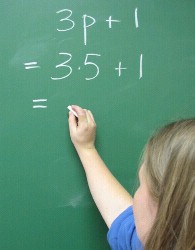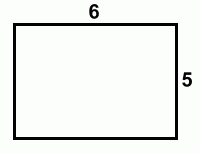
When you know the value of a variable, you can replace the variable by that number and actually work out an answer for the expression. This process is called evaluating an expression. For example, consider the expression 3p + 1 This means 'three times a number, plus one' If you know that the variable p is actually 5, you can work out the answer: 3p + 1 = 3(5) + 1 = 16 The variable p gets replaced by 5 When you do this, the expression works out to be 16 Here are two more examples of expressions being evaluated.
When evaluating an expression, you should show three steps:
You are probably already familiar with some expressions and how they are evaluated. Some of them even have more than one variable. For example:
Sometimes expressions need to be simplified. Go on to the next page and we'll show you how to simplify expressions |
